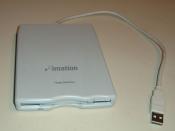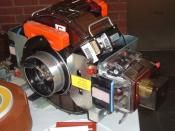Even before the first commercial computers appeared in 1951, "mass" storage, although minuscule by today's standards, was a necessity. As early as the mid-1800s, punch cards were used to provide input to early calculators and other machines. The 1940s ushered in the decade when vacuum tubes were used for storage until, finally, tape drives started to replace punch cards in the early 1950s. Only a couple of years later, magnetic drums appeared on the scene. In 1957, the first hard drive was introduced as a component of IBM's RAMAC 350. It required 50 24-inch disks to store five megabytes of data and cost roughly $35,000.
For years, hard disk drives were confined to mainframe and minicomputer installations. Vast "disk farms" of giant 14 and 8 inch drives costing tens of thousands of dollars each buzzed away in the air conditioned isolation of corporate data centers. The personal computer revolution in the early 1980s changed all that, ushering in the introduction of the first small hard disk drives.
The first 5.25-inch hard disk drives packed 5 to 10 MB of storage, the equivalent of 2,500 to 5,000 pages of double-spaced typed information, into a device the size of a small shoebox. At the time, a storage capacity of 10 MB was considered too large for a so-called "personal" computer.
The first PCs used removable floppy disks as storage devices almost exclusively. The term "floppy" accurately fit the earliest 8-inch PC diskettes and the 5.25-inch diskettes that succeeded them. The inner disk that holds the data usually is made of Mylar and coated with a magnetic oxide, and the outer, plastic cover, bends easily. The inner disk of today's smaller, 3.5-inch floppies is similarly constructed, but they are housed in a rigid plastic case, which is much more durable than the...


